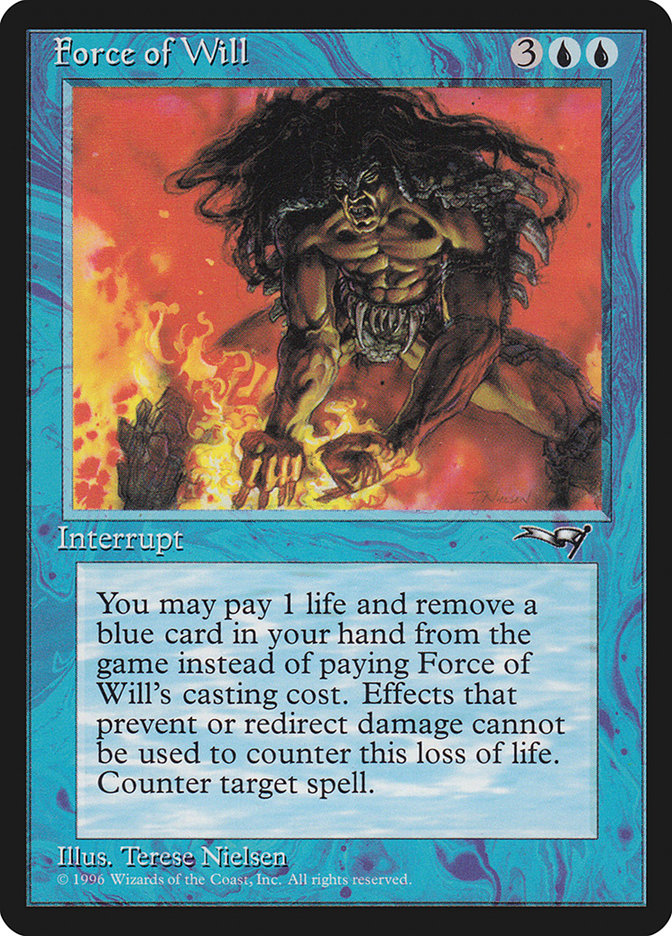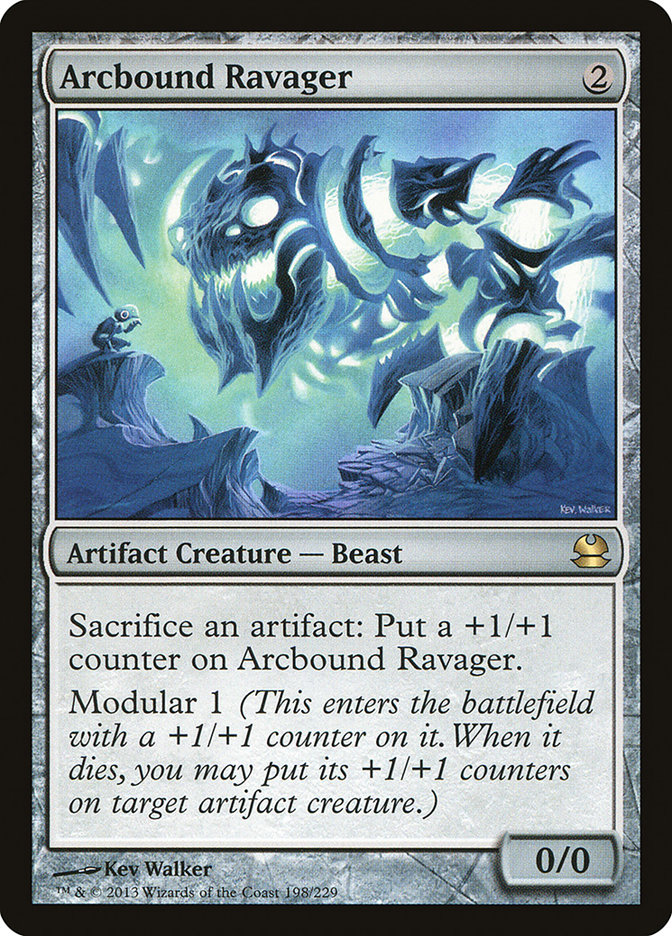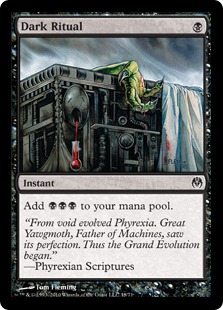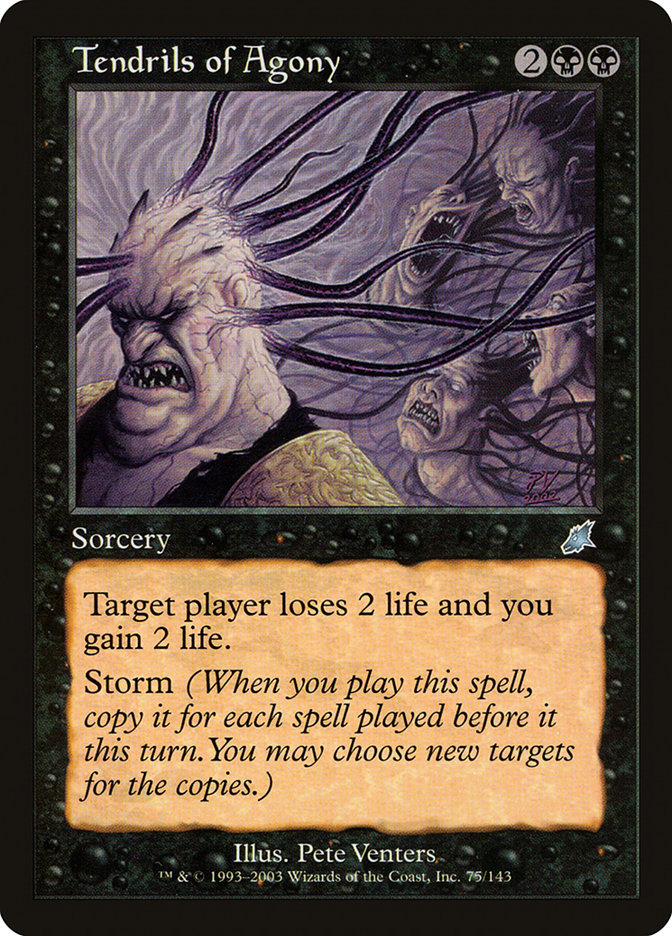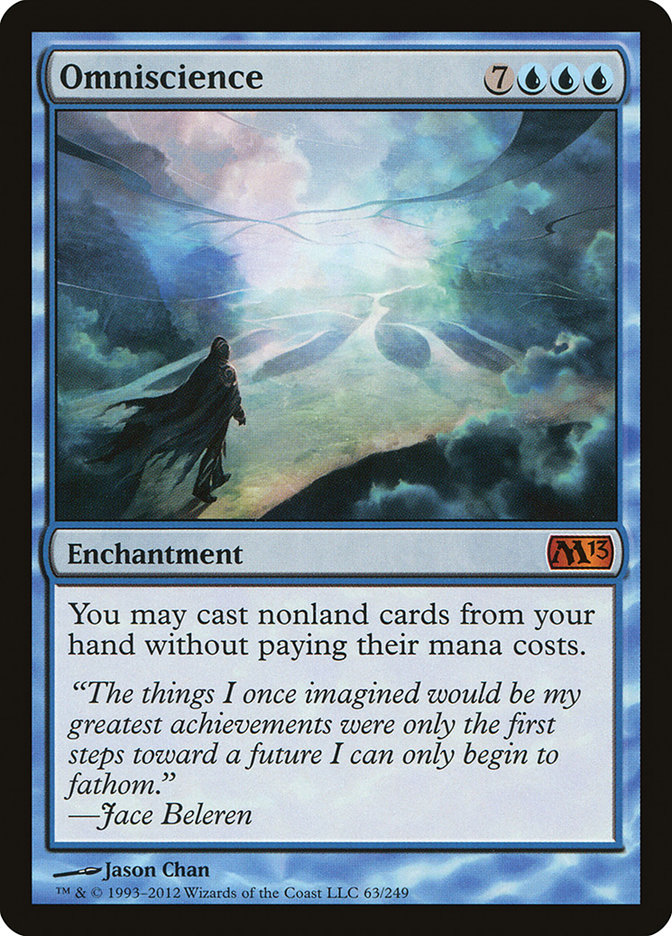Combo Isn’t A Metagame Call; It’s A Lifestyle Choice
For years and years, I have tended to play controlling/midrange decks in Legacy and Modern, but over the past year I hadn’t been getting the kinds of results in tournaments that I had hoped for.
One thing I noticed was that in big formats with a lot of cards, like Legacy and Modern, there are many different decks that try to attack their opponents from a lot of different angles. Trying to have an effective plan for controlling the round 1 opponent who is trying to put Griselbrand into play and the round 2 opponent who is casting Smallpox is really, really difficult.
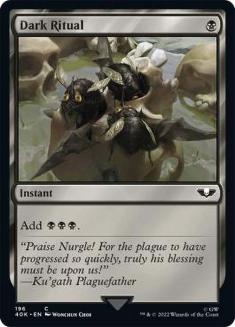
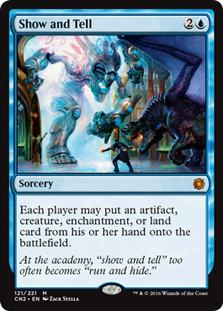
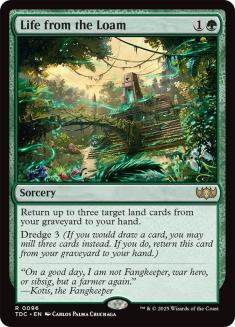
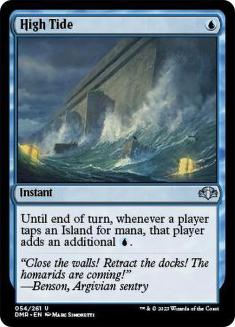
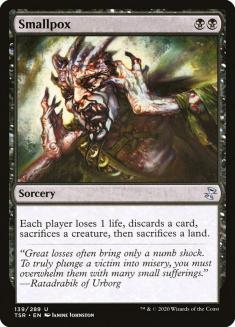
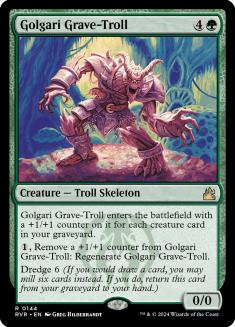
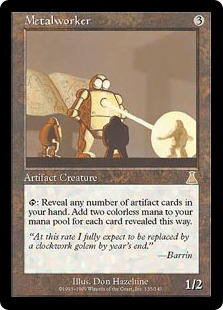
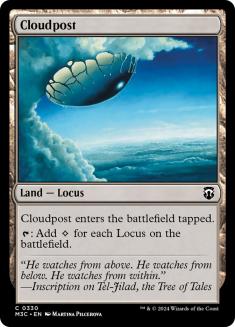
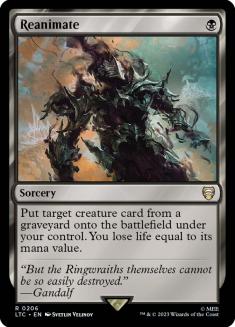
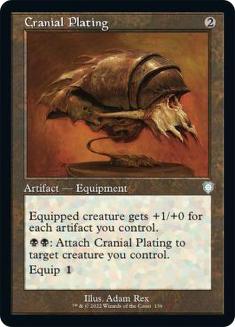
75 cards just isn’t enough to have a plan for everything!
The availability of a ton of powerful strategies makes it very difficult to play a blue or midrange deck that can stave off all the different ways that opponents are bound to come at me.
So I decided to publically come out for the dark side and made a commitment to move out of my comfort zone and really put my energy into playing combo decks for the foreseeable future.
For one thing, when a person is playing on the combo side of the table (assuming the combo player has kept a good hand, which I will talk about later), all of the burden is put squarely on the opponent to impede the combo player’s ability to end the game.
Placing the burden on the opponent is a huge deal because:
Every time they keep a bad hand? DEAD.
Every time they have a bad matchup? DEAD.
Every time they don’t draw their good sideboard card? DEAD.
Every time they don’t understand the matchup or what is important? DEAD.
DEAD. DEAD. DEAD. DEAD. = A LOT OF FREE WINS.
Free wins are important in tournament Magic because the quality of opponent is much higher than it used to be in the past. It is still possible for high-caliber players to leverage their skills against opponents in grindy games, but the higher power level of the cards diminishes these advantages in a lot of ways and makes the variance of topdecks matter more.
Also, one thing that people fail to identify is that a higher-skilled player with a broken combo deck also has plenty of opportunities to leverage play skill and earn wins.
All I Play Is Midrange & That’s Ok
Here is an observation that I have made over time that I believe is generally true:
Most players don’t play combo decks and prefer to play fair decks that attack with creatures, have answers, and grind advantage.
There is a reason that Dark Confidant and Tarmogoyf are the most expensive cards in Modern and Force of Will is an $80 uncommon. DEMAND. These are the types of decks that people tend to choose to play for tournaments.
It’s all about the Benjamins when you’re playing midrange.
One reason that players don’t play as much combo as they probably should is card availability. Especially in Modern and Legacy (the formats where combo is good), players have already coughed up hundreds or thousands of dollars on Tarmogoyfs and Force of Wills and already have a deck. It’s expensive to simply switch, so people don’t.
But every deck in these formats is relatively expensive to acquire. Why don’t people naturally tend to gravitate toward combo decks?
I think that one reason is that Tarmogoyf and Dark Confidant (the good midrange money cards) tend to see a lot of play in Legacy and Modern. So it’s possible to figuratively kill two birds with one stone with regard to the price tag of a Modern deck and a Legacy deck by buying midrange cards.
The two birds/one stone analogy also creates a scenario where players become much more comfortable fighting from the midrange role because they are doing it across multiple formats and acquire a lot of experience in it.
Thus there are more players in a given metagame that are comfortable playing a midrange deck than there are with combo decks.
People naturally gravitate toward what they already have, what they already feel comfortable with, and what they already know.
The Goldilocks Myth
The first myth about combo decks that I would like to dispatch is the Goldilocks outlook.
"That combo deck is too easy, and that combo deck is too hard."
There is a spoken prejudice among Magic players when they choose their decks about the relative skill a player needs to have to be able to properly pilot a deck.
I put properly in italics because no matter what deck a player chooses their results will be determined firstly by luck of the draw and secondly by their abilities.
Every single deck requires a lot of technical skill to pilot well regardless of whether it is aggro, combo, midrange, or control.
Many players unfairly assign judgments to decks and label them as either newbie or impossibly difficult decks to play.
For instance, for a really long time there was a common mindset among a lot of players that in Legacy Show and Tell and in Modern Affinity were decks that were easy and required no skill to play.
Playing these decks was akin to you shuffle up and draw your hand; if you have the nuts and your opponent has nothing, you win, and if you don’t, you lose
SO. NOT. TRUE.
It’s because what these decks are doing is so powerful and so linear that players simply rationalize losing to these decks by creating such a myth. Sure, it’s true that if these decks have strong hands and the opponent can’t properly interact that the game is over. However, these decks also have a lot of play and reward their pilots for making good decisions and have flexibility that people often overlook.
For instance, if I am playing Sneak and Show, it isn’t a given that I will just run my Show and Tell into a Daze or Force of Will on the first turn. I might build up my hand and create advantage where I can win the game later on from a position where I’m not vulnerable to anything. Those are options, and strong pilots will undoubtedly put up better results than players who cannot identify multiple lines of play and choose the best one.
Here is my version of the Sneak and Show deck that I have been playing and tinkering with for the past month.
Creatures (8)
Lands (19)
Spells (33)

I have really liked Seething Song as a card I can bring in when I’m incentivized to board out Show and Tells and bring in Through the Breach. It’s pretty awesome that Seething Song will cast and activate Sneak Attack all at once and also gives me the exact amount of mana to Through the Breach. It is also comes up (granted, not often) that the Seething Songs net plus-three mana ,which makes it more reasonable to actually cast Emrakul in the mirror match where both sides have a million counterspells and sometimes the games go really long.
For the record, I consider Affinity in Modern to be a combo deck—and a really good one at that. It does attack with creatures, which might lead people to think it’s an aggro deck, but it isn’t.
When beatdown and combo merge, it’s a powerful union.
The deck’s power arises from powerful combinations of cards that team up to do absolutely insane things because of their synergies. Mox Opal, Cranial Plating, and pumping the infect Nexus are all ways that Affinity can immediately go off and simply combo off to win games very quickly.
Affinity in Modern is perhaps the best example of the Goldilocks "too easy" mindset, so much so that I even fell victim to this incorrect way of thinking. Personally, I thought the deck was basically a mindless deck to pilot and was always turned off to it because it played with cards like Ornithopter and could never beat Artifact hosers like Stony Silence or Hurkyl’s Recall.
Well, when I started playing the deck, I realized this was the absolute opposite of true, and I believe that Affinity is actually one of (if not THE) most difficult deck to play well in the entire format.
I have had a lot of players ask me for my updated Affinity list, and I will share it now with everybody.
Creatures (25)
- 4 Arcbound Ravager
- 4 Ornithopter
- 3 Steel Overseer
- 2 Memnite
- 4 Etched Champion
- 4 Signal Pest
- 4 Vault Skirge
Lands (16)
Spells (19)

I moved back to the Thoughtcasts in the maindeck and have been really happy with them. They are kind of underwhelming on the surface, but one-mana Divination still goes a long way against a random opponent. I also moved back to Spell Pierce from Thoughtseize. Thoughtseize is great, and I board it in a lot. However, trading one mana for their mana (as opposed to a card) simply creates more blowout scenarios.
I beat Tron like it’s my job.
One of the reasons that I was drawn to and have stuck with Affinity is that it absolutely positively crushes Tron. Before I switched to Affinity, I had lost nine consecutive matches to Tron decks in Pro Tours, Grand Prix, and other tournaments, and I was looking to turn that streak around.
Well, I did. 8-1 the other way.
I have also been very happy with more Ghost Quarters out of the sideboard against Tron and the mirror match. Drawing a Ghost Quarter and Time Walking Tron once is usually more than enough to steal a game from them.
The last card I have been trying out and am pleased with is the singleton Tezzeret, Agent of Bolas, which I like against grindy decks like Jund and U/W/R. It is basically the most powerful threat you can produce against people who are trying to force the game to go long. It provides an endless stream of threats, can threaten lethal basically on the next turn, and can just draw lots of cards against people that can’t end the game quickly.
Decks That Are Too Hard
Last Monday I expanded my combo experience by playing The Epic Storm at a 25-player Legacy tournament at my home store of RIW Hobbies, and I liked the deck a lot.
A lot of players shy away from playing particular combo decks because they believe those decks are simply outside of their wheelhouse of being able to play correctly, and Storm decks tend to be ones that people are afraid to play.
I have played a lot of Storm decks in Vintage and Legacy over the years, and I can assure all of you one day combo players out there that there’s nothing to be afraid of.
There is nothing to fear but fear itself. Oh, and THEY should fear YOU.
A lot of people have the mindset that Storm decks are super difficult to play and require some kind of intense knowledge of the archetype that can be only gained through years of extensive research and in-depth analysis.
All you really need to do at the most basic level is know how to count to ten.
Every single card in the deck either looks at more cards, tutors for a victory condition, or makes mana. And they all make a storm for Tendrils of Agony.
For an archetype that has such a reputation for being extremely difficult to pilot, it may actually be the easiest deck to actually play games with because every game plays out the same way and all of the cards do the same thing!
I borrowed a The Epic Storm deck from my friend Dustin and played it in the event, going 4-1 in a straight Swiss tournament and getting second place. Here is how I would build the deck if I were going to play it again in the future.
Lands (13)
Spells (47)

The only hard parts about playing a deck like this is deciding which hands are to be kept and which hands should be mulliganed and also how to sideboard.
Sideboarding is only difficult because it requires players to know which hate cards opponents in different matchups are likely to be sideboarding in during the matchup and which cards in the Storm sideboard give the best chance of beating those cards.
Are they boarding in a bunch of Counterspells? Xantid Swarm.
Are they boarding in hate cards that make it so you can’t win? Chain of Vapor.
Will they have annoying creatures that make it so you can’t win? Toxic Deluge.
It is the typical combo versus the world matchup. There are almost no decks that can actually race this broken pile of win the game, so all opponents are forced to create interactions with the Storm deck because if they don’t then they just die.
Once we move to sideboarding, the goal is to figure out what kinds of interactions they are likely to try to force and then bring in cards that negate those interactions.
Usually, the types of interactions they are trying to produce are pretty obvious.
Are they blue? Counterspells.
Are they creatures? Hate bears.
Are they control? Permanents.
It’s also pretty sweet that most opponents will be forced to keep their mana up and that most decks need to board out threats to interact, which makes all decks get slower against Tendrils and gives the Storm player even more time to sculpt the unbeatable grip.
Fear Of Being "Just Dead"
Another reason that I believe players don’t play combo as often as they should considering how busted a lot of these combo decks are is that players have an unrealistic fear of being "just dead."
One of the biggest downsides of playing a combo deck is that there are going to be times where an opponent wins the match simply by drawing and playing one very good hate card.
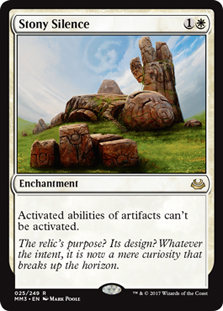
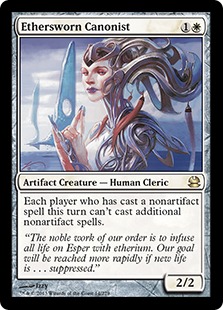
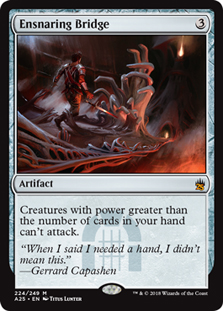

Silver bullets for Affinity, Storm, Sneak and Show, and Dredge.
Perhaps the biggest reason that I avoided switching to the dark side and playing combo in older formats was because I had the fear that I would lose to a single card from my opponent’s sideboard.
Yes, there are cards out there that are really good at ending games against combo decks, and sometimes they come down in a situation where they can end a game all by themselves.
First of all, they only end the game IF they get into play and then IF you cannot answer them. I have beaten Stony Silence with Affinity, I have beaten Ethersworn Canonist with Storm (this week in fact), and I have beaten Ensnaring Bridge with Sneak and Show.
All combo decks have ways to interact with the hate either through Thoughtseize, counterspells, or a way to bounce/remove the hate.
Secondly and perhaps most importantly, there are so many degenerate combo decks that attack people from so many different angles that your opponents will not have enough sideboard space to include enough copies of these cards that you will consistently be facing down the specific hate card that is really good against you.
An opponent may have two cards in their sideboard that are really good against you, but it is likely that you have way more ways to interact with it or stop it than they have hate!
And when they don’t have it, oh boy . . .
The more that I play with these combo decks, the more I am reminded that the number of times that I am "just dead" to the hate is relatively small compared to the amount of times that my opponent is "just dead" to my broken synergies.
Many of these broken combo decks actually have broken hate cards that they get to play that are as good or BETTER against certain matchups than the fair decks’ hate cards against the combo.
Flusterstorm? Get covered in Bees. BZZZZ!
If they board in a bunch of Flusterstorms and you board in Xantid Swarms, which sideboard plan is actually trump? I may not be able to play my beloved Killer Bees in tournament Magic anymore, but I can sure cover my opponent in bees with Xantid Swarm for an Insect-related thrill.
So the takeaways from today’s installment:
1. Combo decks get more free wins than any other type of deck in Magic. Since the strategies are linear and force specific kinds of interactions, opponents who can’t fight along the lines that you prescribe are basically going to lose almost every time.
2. For how good combo decks are, not enough people play them as probably should. Familiarity, card availability, and fear of trying new things are likely to blame for this phenomenon.
3. Combo decks relative to any other kind of deck are not easier or more difficult to play reasonably well. Playing any deck well requires a ton of skill and a deep understanding of the game. Easy-to-win games are easy to win, difficult-to-win games are difficult to win—it doesn’t matter what kind of deck a player is piloting. A player will get the low-hanging fruit most of the time, and the close ones will go to the player who plays better a lot of the time.
4. If you have a plan for the hate, there is no reason to be unreasonably afraid of an opponent playing a good card. Saying "I will not play deck X because it loses to deck Y" on principle is a bad principle in the dark. First of all, you might actually be able to beat the hate a fair amount of the time. Second of all, people don’t have enough of the hate that you are going to have to play against it the majority of the time. Third of all, did I mention free wins when they don’t have it?
I hope that today’s article will open up the minds of a few of my readers to venture out in the unknown and join me as a champion of the Dark Ritual side of the Force. Since I started playing combo decks and honing my skills at getting the most out of playing them, it is clear to me that I am winning more games in Modern and Legacy than I was trotting out the same old midrange/control decks.
The power of the dark side of the Force.
Magic has been changing for years, and being able to get to the business of getting an opponent dead is now a necessary part of the game. Combo decks are very efficient and quick about getting down to business.
There are players out there who have played for years and have never gotten to draw fourteen cards with Griselbrand, go buck wild with Omniscience, win on the first turn through Force of Will, or win on turn 2 in Modern.
All they play is midrange, and that’s okay.



